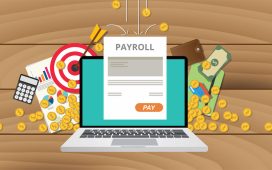Automation has changed the way businesses handle accounting. Tasks that once required hours of manual effort such as bookkeeping, invoicing, tax calculations, and financial reporting can now be completed in minutes with the help of software.
Businesses are increasingly adopting cloud-based accounting systems, artificial intelligence (AI), and machine learning tools to streamline financial management, improve accuracy, and reduce the risk of human error. However, as companies place greater reliance on automation, a crucial question arises: Does this dependence on software make businesses more vulnerable to fraud?
While automation provides undeniable benefits, it is not a foolproof solution. Fraudulent activity can still slip through undetected, particularly when businesses become overly reliant on their software and neglect proper oversight.
How Automation Helps Prevent Fraud
Before we dive into the risks, let’s acknowledge the ways automation helps businesses stay protected.
1. Reduces Human Error
One of the biggest advantages of automation is that it eliminates common human mistakes. Manually entering numbers into spreadsheets or ledgers can lead to miscalculations, duplicate entries, or missing transactions—all of which can make fraud easier to hide. With automated accounting, calculations are done instantly and records are updated in real time.
2. Provide a Clear Paper Trail
Modern accounting software logs every transaction, making it harder for anyone to cover their tracks. If an employee tries to modify a record or delete an entry, the system usually keeps a history of changes. This creates accountability and makes it easier to investigate any suspicious activity.
3. Detects Unusual Transactions
Many cloud-based accounting solutions include built-in fraud detection tools. These systems use algorithms to flag unusual activities such as duplicate invoices, inconsistent spending patterns, or payments to unfamiliar accounts. If something seems off, the software can alert business owners before the issue escalates.
4. Controls User Access
Most accounting software allows businesses to restrict access based on roles. For example, a junior accountant might only be able to enter transactions, while a senior finance officer can approve payments. Limiting access reduces the chances of unauthorised modifications and makes it harder for a single person to commit fraud without being noticed.
5. Reduces Cash Handling
Handling cash manually always comes with risks. It’s easy for money to be misreported, stolen, or misplaced. Digital transactions, on the other hand, leave behind a clear record, making fraud easier to detect and harder to commit.
With all these benefits, it’s easy to see why businesses trust accounting software. But does automation guarantee complete protection? Not necessarily. There are still ways fraud can slip through the cracks, especially when businesses assume their system is foolproof.
The Risks of Relying Too Much on Automation
While automation can help prevent fraud, it’s not a magic solution. If businesses become too reliant on their software, they may overlook serious vulnerabilities. Here’s why automation isn’t a perfect safeguard.
1. Systems Can Be Manipulated
Just because a process is automated doesn’t mean it’s immune to tampering. Employees with high-level access can still create fake invoices, alter financial records, or authorise fraudulent transactions. If there’s no oversight, these changes might go unnoticed for months or even years.
2. A False Sense of Security
Many businesses assume that once they’ve set up their accounting software, they don’t need to review financial records as closely. This is exactly what fraudsters count on. They know that automated systems can’t question transactions the way a human would. Without regular audits and manual reviews, fraudulent activity can slip through undetected.
3. Employees Can Exploit Loopholes
Even with automation, clever fraudsters can find ways to game the system. A common example is “salami slicing” fraud, where tiny amounts of money are siphoned from multiple transactions over time. These small discrepancies may be too minor for software to flag, but they can add up to significant losses if left unchecked.
Another trick is falsifying vendor payments. If an employee sets up a fake supplier and submits invoices for non-existent services, the system may process the payment automatically especially if there’s no strong approval process in place.
4. Cybersecurity Risks
Cloud-based accounting software is convenient, but it also presents security challenges. If hackers gain access to a company’s system, they can steal financial data, manipulate records, or even lock businesses out of their accounts.
A ransomware attack, for example, could paralyse an entire company by encrypting financial files and demanding payment for their release.
5. Over-Reliance on AI and Machine Learning
Some accounting platforms use artificial intelligence (AI) to automate approvals and flag suspicious transactions. While AI can be helpful, it’s not always accurate. If businesses rely too heavily on AI-driven alerts, they may ignore fraud that doesn’t fit the system’s predefined patterns.
For example, if an employee slowly increases fraudulent transactions over time, the AI might not detect the pattern change. A human reviewer, however, might notice that something doesn’t look right. That’s why human oversight is still crucial, even in an automated system.
How Businesses Can Protect Themselves
If automation isn’t foolproof, how can businesses protect themselves? The key is balancing technology with active oversight. Here’s how:
- Conduct Regular Audits – Even with automation, businesses should manually review financial reports to catch any irregularities. A fresh pair of eyes can spot things that software might miss.
- Limit User Access – Only give employees access to the data and functions they need. The fewer people who can edit financial records, the lower the risk of internal fraud.
- Enable Multi-Level Approvals – Instead of allowing a single person to approve payments, businesses should set up a multi-step approval process. This adds an extra
- Use Fraud Alerts Wisely – Businesses should customise fraud detection settings to match their specific needs. Default settings may not be enough to catch sophisticated fraud schemes.
- Train Employees on Fraud Awareness – Sometimes, fraud isn’t committed by employees but by external scammers. Phishing emails, fake payment requests, and invoice fraud are common tactics used to trick businesses. Training employees to recognise red flags can prevent costly mistakes.
- Strengthen Cybersecurity Measures – Strong passwords, two-factor authentication, and regular security updates can help protect against cyber threats. Businesses should also have a backup system in case of data breaches or ransomware attacks.
Final Thoughts
Accounting software has made financial management faster, easier, and more efficient. But while automation can help reduce fraud, it’s not a foolproof shield. The biggest mistake businesses can make is assuming that their software will catch everything.
Fraud prevention isn’t just about having the right tools, but also about using them wisely. Combining smart technology with human oversight, businesses can get the best of both worlds: the convenience of automation and the security of careful monitoring.
At the end of the day, software is just a tool. It’s how businesses use it that determines whether it prevents fraud or enables it.






